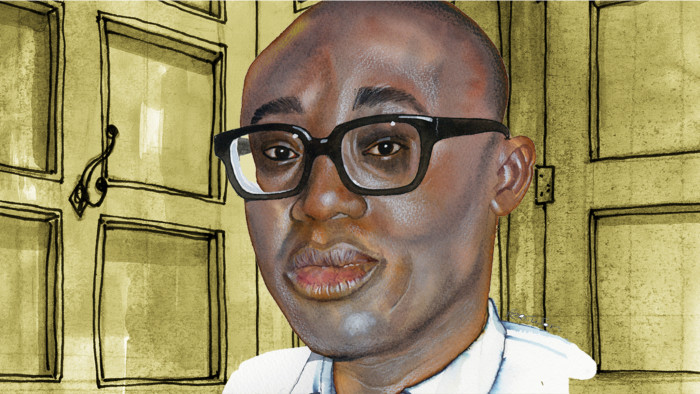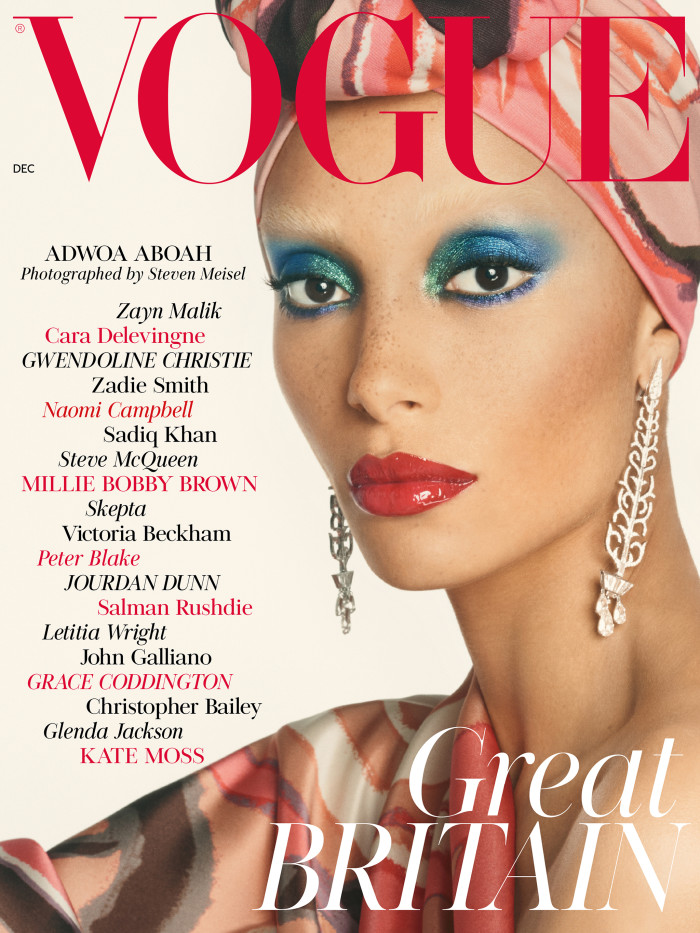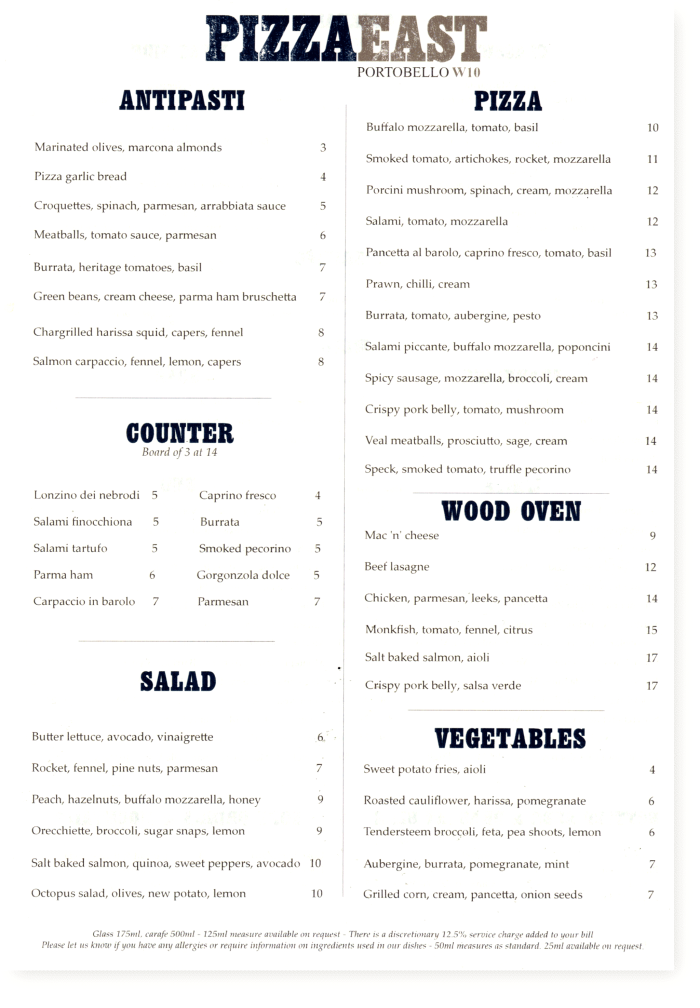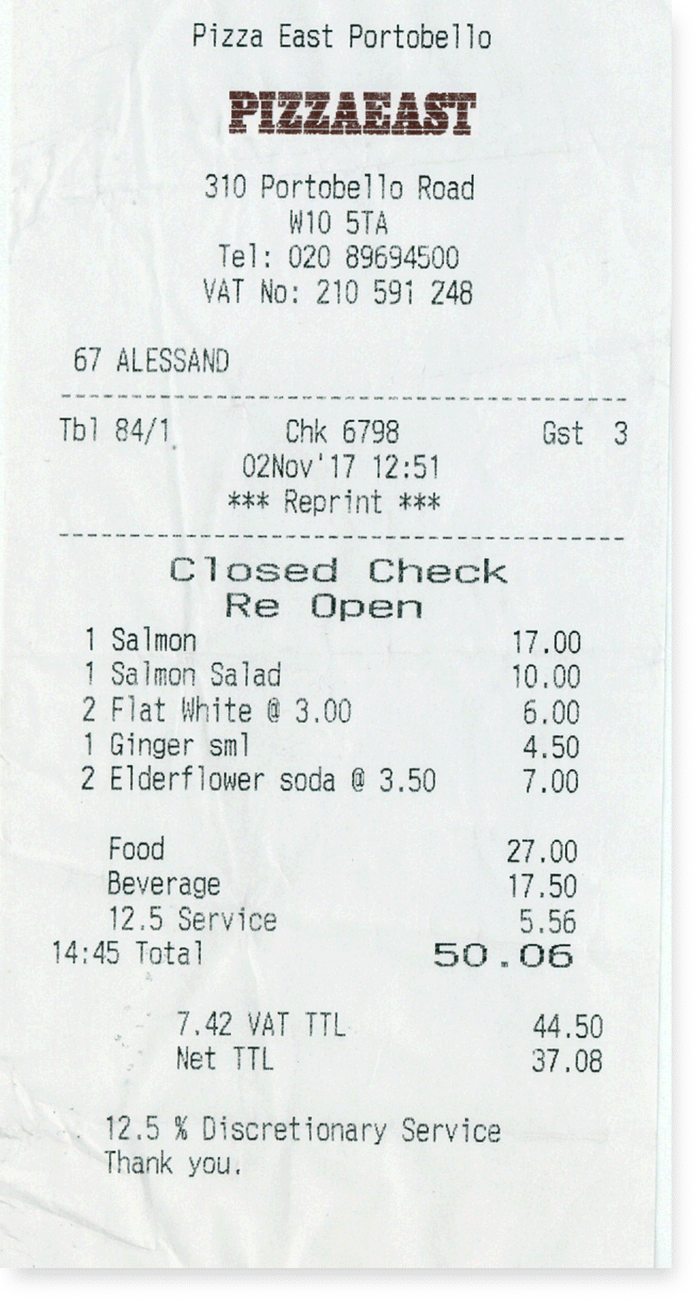New Vogue editor Edward Enninful on catwalks, catfights and why fashion diversity matters
Simply sign up to the Life & Arts myFT Digest -- delivered directly to your inbox.

“Soooo fresh,” sighs Edward Enninful as he takes a sip of elderflower-and-lime “mocktail”, sounding as smooth and persuasive as the voiceover in an advert. We are tucked away at a corner table in the Portobello branch of Pizza East, a carb-centric contrast to my rendezvous with his predecessor, Alexandra Shulman, whom I met at a clubby Mayfair restaurant around the corner from Vogue House.
The new editor of British Vogue — the first man to hold the post in the magazine’s 101-year history — likes to visit Pizza East “five or six times a week”, if not for breakfast, then for supper after work. “I love it because it’s a local hang-out, it’s very low key.” On a weekday, the restaurant is quietly populated by a smattering of laptops-at-lunch thirtysomething freelancers who prop up the casual dining offshoot of Nick Jones’ Soho House Group.
“Local hang-out” and “very low key” are hardly phrases one would associate with Vogue. The Condé Nast-owned magazine, spun off into multilingual editions around the world, is still le dernier cri in a certain kind of glossy glamour. Thanks to fictionalised accounts such as The Devil Wears Prada, we almost expect its editors to make impossible demands of minions and cosy up to designers — an image bolstered by the power struggle following Shulman’s departure this year. To outsiders it may seem much ado about a magazine, but to designers the lucrative Vogue seal of approval, bestowed by the editor, is still much sought after.

Enninful wears all the terrible fashion angst lightly. Since he started in August, he’s been on a mission to change a magazine that could do with, if not a full facelift, then at least some freshening up. And just as American Vogue editor Anna Wintour has played up to her frosty maven persona, Enninful is on a campaign to be approachable.
In his dress, he wears his success discreetly. In common with many alpha fashion players, the 45-year-old favours a simple personal uniform, which he says he finds “comforting”. Today he’s in a white shirt (“I think it’s Prada”), black Burberry trousers and a charcoal tailored coat by Dries Van Noten. Hidden under his shirt cuff are a chunky Rolex and a decorative bracelet that he picked up in Positano. His thick-rimmed glasses give him a curious aspect, so that when he looks at me I feel closely scrutinised.
“Are you hungry? Shall we eat?” he asks as we look over the menu of stodgy staples such as pizza and lasagne cooked in a wood-fired oven. Enninful tells me he’s off meat since watching a documentary on Netflix called What The Health? But giving up chicken — his favourite food — is hard. “I grew up in an African household, so lots of chicken, lots of rice. We ate Jollof rice, a very west African dish.” His long-term partner, film-maker Alec Maxwell, does the cooking at home.
Enninful opts for a salt-baked salmon, saffron rice and butternut squash salad and, on his recommendation, I go for salt-baked salmon and aioli with a chickpea and pepper salad.
The first edition of Vogue under his editorship has just arrived on newsstands. I have already received a top-secret set of proofs of the December issue, hand-delivered by a nervous girl from the Condé Nast office. It’s the culmination of months of hysteria and hype. First Shulman announced her departure, in January, after 25 years at the helm. Then came the gossip-athon over who would get the job and the surprise, in certain circles, over Enninful’s appointment. And finally there was the “posh girl exodus” of long-serving staff, departing in a swift regime change dubbed “Vrexit”. Deputy editor Emily Sheffield and fashion director Lucinda Chambers were two high-profile departures; among new hires are film director Steve McQueen, super-stylist Venetia Scott and model Naomi Campbell as an unlikely interviewer.
He plays down the shake-up with customary diplomacy. “When any manager comes into a team they need to do that, and there were people who I felt would help me realise what I had in my mind, who I trusted.” With the future of print magazines uncertain, and with luxury fashion brands reviewing their business models, the most powerful man in British fashion has a job that’s going to be as challenging as it is chic.
Not only is Enninful the first male editor of British Vogue, and its first black editor, he’s also a stylist used to mastering imagery rather than words. He doesn’t have the invisible labels of privilege that most Vogue staff wear, and he wants Vogue to reflect that.
“When I heard I got the job, I thought I would love to create a Vogue that is inclusive, that represents the world today,” he says. “I spoke to many of my friends who live here [in London] and they felt that they weren’t represented somehow in the magazine. They come from all walks of life and I thought it’s very important to me to create a magazine that deals with a range of all sizes, age, gender, religion, modern Britain today. I wanted Vogue to be inviting and not so intimidating.”
After relocating from New York, he has moved back to west London, near his childhood stomping ground. He is even toying with buying a property on his old street. Enninful’s family emigrated from Ghana when he was a toddler. Growing up with his army officer father, seamstress mother and five siblings, he says he had a “happy” childhood. Fashion, he says, first sparked his interest when he watched his late mother running up clothes for local women on her Singer sewing machine. From her, he learnt how to make and customise his own designs.
“I come from a family who didn’t have much money but raised me to believe that money wasn’t the most important thing in the world. We had enough, we were happy. My mother and father just taught me the basics, to be really kind, to really listen to people. I have never been one to put on airs and graces.”
Nonetheless, he was awarded the honour of OBE last year for helping to diversify the fashion industry. He says his mother was “just over the moon, it meant so much to my parents, that’s why out of respect to my mother I always add it to my name.”

Enninful is unapologetically well connected — just look at him on Instagram, pictured with everyone from Rihanna to Madonna. But it was a chance meeting that started his career. “I didn’t know anything about the fashion industry until I met the stylist Simon Foxton on a Tube,” he says. “I was 16, on my way to Kingsway College and then my whole world opened up.” Squeaking with laughter, he adds, “before that, like in every African family, you are meant to be a lawyer.” The meeting with Foxton led to work as a model, stylist and then as fashion director of avant-garde style magazine i-D in 1991. He styled shoots for Vogue Italia and American Vogue (he has a cameo in the documentary The September Issue) and became creative and fashion director of American fashion magazine W in 2011.
Enninful is known for his maverick style: in 2005 he created a memorably kitsch story called “Makeover Madness” for Vogue Italia depicting supermodel Linda Evangelista as a wealthy fashion victim undergoing plastic surgery. In 2008 he masterminded an issue of Vogue Italia featuring only black models. It proved so popular that 40,000 extra copies were printed.
So what’s the master plan to boost the numbers at Vogue, currently with a print circulation of 190,021, down 2.6 per cent year-on-year? Condé Nast is in the process of slashing jobs and budgets, and will reduce the print version of UK Glamour to twice a year and make Teen Vogue in the US online only.
His reply, like those of many people hailed as visionaries, is vague. “I think the most important thing is the ability to speak to the woman out there and if an increase comes with that, great.” But has he been set a target? “Yes, but you’ll have to ask someone else about that.”
The average print reader is aged 38. Can he persuade millennials to buy the magazine? “That’s why we go back to digital and other platforms, which will hopefully lead them to pick up the magazine.” The digital team have now been combined with the magazine team in its Hanover Square offices. And how is he going to identify with a female audience? “I have been working with women for 20 years, my sex has never had anything to do with it. I love women and I always have.”
Issue one of the Enninful era speaks of an editor who doesn’t waste time on self-doubt or affectation. “Anyone who knows me will tell you that I don’t really dwell,” he says. “Of course I get stressed — I don’t always show it but everyone has their internal life.” After going to film director David Lynch’s transcendental meditation centre in the US, he now meditates for 20 minutes a day. His preternatural calm doesn’t come naturally.
Perhaps now that Enninful has landed the most important job in the British fashion industry, the staff at Pizza East will let him bring Ru, his soulful-eyed Boston terrier (who has his own Instagram account) into the restaurant? “Oh, I don’t want to push it.”
Enninful’s first Vogue has some standout pieces. In a wry feature by Zadie Smith about the Queen’s common touch, the writer describes how “distinctly lower-middle class” Her Majesty is, having her breakfast delivered in “airtight Tupperware alongside a copy of the Racing Post”. Amazonian Game of Thrones actress Gwendoline Christie talks about subverting female stereotypes, photographed by Juergen Teller in the Barbican, and British designers, including John Galliano and Victoria Beckham, go back to the places that shaped them. For Galliano it’s London’s Elephant and Castle, where he’s photographed at the bus stop. It’s also far more racially diverse.
Indeed, for his first cover star, he says “there was only one person I wanted”: 25-year-old mixed-race model-of-the-moment Adwoa Aboah. Aboah has been styled by Enninful in a silk turban and icicle-like diamond earrings, made up by black British make-up artist and now Vogue contributing editor Pat McGrath in shimmering blue disco eye-shadow and glossy scarlet lips, and photographed by Steven Meisel, who hasn’t shot for British Vogue since 1991. Although the cover has the soft colours and dreamy glamour of the 1970s, Enninful says, “she represents now, a generation, today, she uses her beauty to do something to the world, with [her online magazine] Gurls Talk. She’s mixed-race, so it’s about diversity, which was very important to me.”
Does he think the fashion industry is starting to address its woeful lack of diversity? “Conversations are happening and I like the fact that diversity is no longer just about black and white. It’s about shape, it’s about religion, it’s about gender, it’s so broad and I’m really thrilled by it. Though it’s not enough to put one black model in a show; we have to go back to magazines and designers’ studios and we have to figure out how we get interns, and people to work backstage [from diverse backgrounds].”
In August, Naomi Campbell posted a picture of Shulman’s all-white Vogue staff, and wrote: “Looking forward to an inclusive and diverse staff now that @edward_enninful is the editor.” I ask how he felt about her inflammatory post. He gives an indulgent smile, the kind you might give if your friend gets too drunk and is rude to someone you don’t like either. “You know, Naomi is Naomi. All I know is that my Vogue will be about going to certain schools and places where you wouldn’t normally look for interns, just open it up really.”
The waiter arrives with our lunch. “Can I get Tabasco?” Enninful asks. “I never eat anything without Tabasco — and chilli oil too, please. There is a chilli sauce here that they know I love. When you are a chilli enthusiast, you end up collecting it. All my friends at Christmas give me chilli.”
Conversation turns to his mentors, who include i-D founders Terry and Trisha Jones (they “gave an opportunity to a black kid from the inner city”) and Anna Wintour. He recalls showing the notoriously hard-to-impress editor “an idea I wanted to shoot in a junk yard. She was like, ‘amp it up, lift it, rich rich rich’, which are the phrases she used when something wasn’t glamorous enough. She really taught me how to mix art and commerce.”
Shulman, meanwhile, has not exactly pulled her punches. I wonder what Enninful made of an article by his predecessor for the website Business of Fashion about the demands of being an editor. Shulman’s conclusion, that editing is “certainly not a job for someone who . . . thinks that the main part of their job is being photographed in . . . designer clothes with a roster of famous friends” appeared to be aimed at Enninful, who has 615,000 followers on Instagram, and regularly posts pictures of himself with the likes of Nicole Kidman, Marc Jacobs and Katy Perry.

“Yes, I heard about the column,” he shrugs, with a bit of a pout, as our plates are cleared. “All I can say is she was at Vogue for a quarter of a century. She had her Vogue, it represented the times, and I’ll have mine. It was a disruption and a nuisance but I had a magazine to run, so I did that. I didn’t really give it much thought.”
Speaking of more serious scandals, is the fashion industry on the brink of its own Weinstein moment? Numerous women have accused photographer Terry Richardson of sexual harassment, and Condé Nast have announced that they will no longer work with him. Is Enninful aware of Richardson’s inappropriate behaviour? “I mean, I worked with Terry in the 1990s, the last time was probably 1998, we haven’t worked together for 20-something years. I’ve read the articles. The photographers I work with are incredibly kind and generous, things like that do not happen on my set.”
However, his own experiences have informed his views on how to keep models, in particular, safe. “I was a 16-year-old model going on shoots and I really empathise with the vulnerable. I was vulnerable but my mother would come with me sometimes, and I [was working with] incredible people like [photographer] Nick Knight. I have always wanted to create a safe haven on my shoots, whether it’s the make- up artist being a mentor, or people’s parents coming with them, I am open to that.”
Did people make advances towards him? “Yeah, I mean you are a kid, you don’t know what to do, but I had great people on set looking after me. I was so lucky.”
We both order a flat white, and Enninful orders a ginger juice to take away. The conversation winds down with some eclectic non-shop talk — from his preferred fragrance (Commes Des Garçons Kyoto incense) to the cross on his bracelet (“I’m Church of England, I’m not religious but my family are a bit. I believe there is someone looking after us but I wouldn’t say it was God”) and I ask Enninful how exactly he has become so well connected.
“There’s a certain approachability I know I have, it’s not something you can switch on or off.”
Enninful believes “we live in times where it’s important to be approachable. Those days of being frosty and stand-offish to people are gone.” A surprising sentiment from one of the most powerful editors in magazine journalism. But then again, fashion likes nothing better than reinvention.
Carola Long is the FT’s deputy fashion editor
Illustration by James Ferguson
Letter in response to this article:
Have a proper drink, FT, with one of music’s greats / From Stephen Byfield, Bath, Somerset, UK
Comments